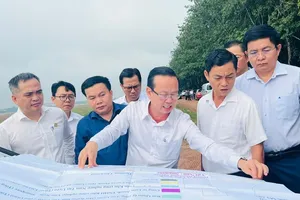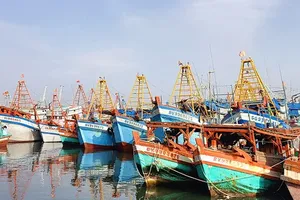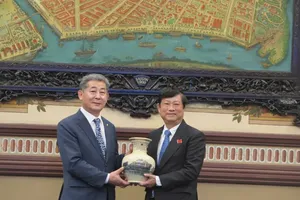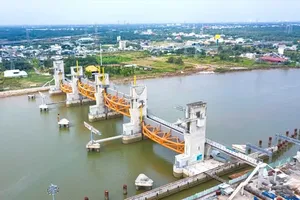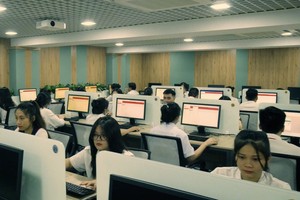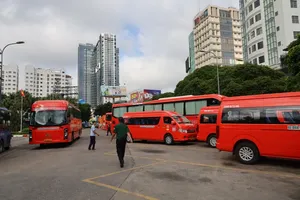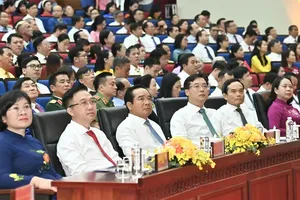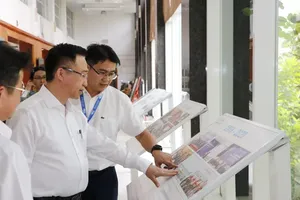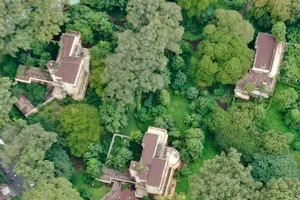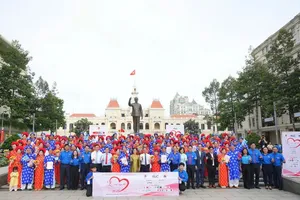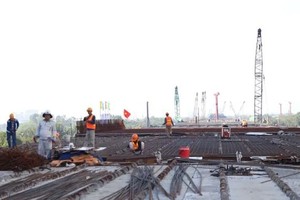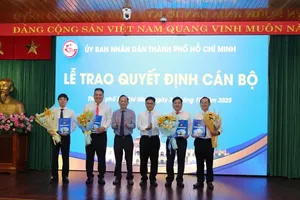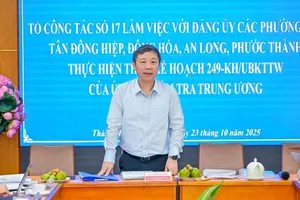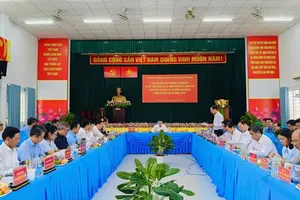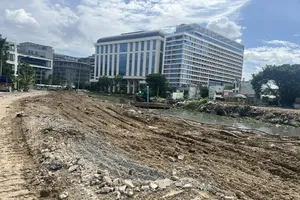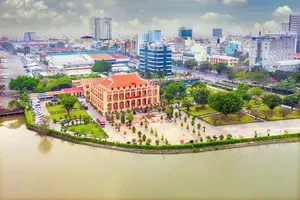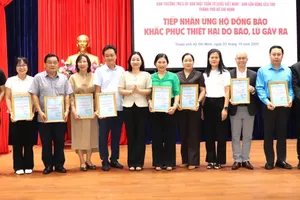Chairman Nguyen Van Duoc of HCMC People's Committee announced the city's goal to rank among the top 100 most livable cities by 2030, with a vision to 2045. To achieve this, the city must revise and rezone its urban planning, fully utilizing the strengths of its three key zones.
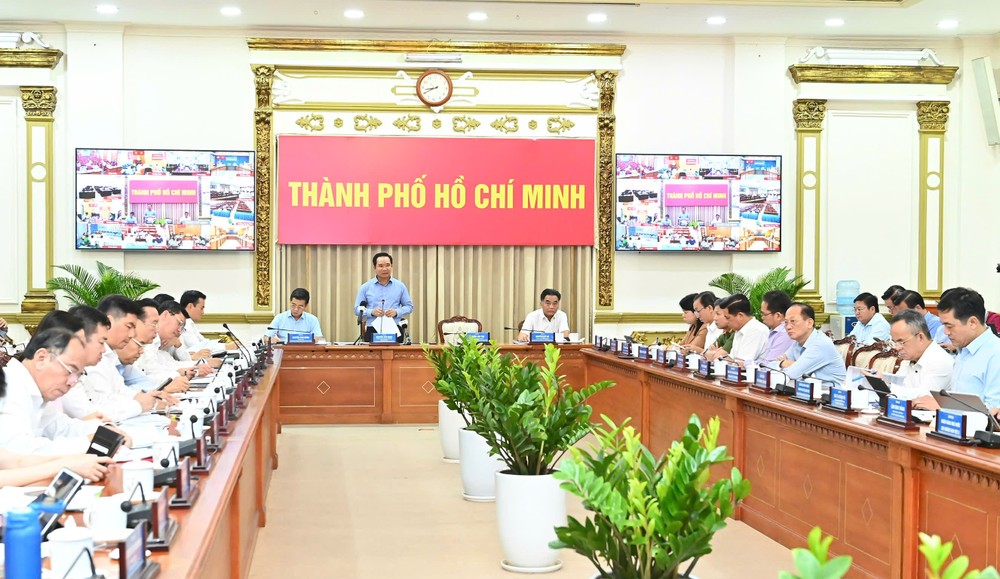
He made the statement at this morning's meeting held by the Ho Chi Minh City People's Committee to review the socio-economic performance of the first half of the year and outline key tasks and solutions for the second half of 2025. The meeting was conducted in person at the HCMC People's Committee headquarters and virtually connected to 168 wards, communes and special zones.
In his opening address, Chairman Nguyen Van Duoc directed delegates to prioritize critical issues, thoroughly assess current challenges and limitations as well as propose specific and practical solutions.
Key discussion points included evaluating the implementation of the two-tier local government model, the performance of commune-level authorities in fulfilling their roles and responsibilities, the number of citizens accessing services in the early days of implementation and the attitudes of public officials during service delivery. He also requested that the Ho Chi Minh City Digital Transformation Center review network connectivity to wards, communes, and special zones, as well as assess the administrative software systems to ensure that public services can be processed independently of administrative boundaries.
Commenting that the city's socio-economic growth in the first half of the year was fairly positive but still fell short of expectations, the Chairman of the Ho Chi Minh City People's Committee urged delegates to focus their discussions on identifying concrete solutions to ensure the city's Gross Regional Domestic Product (GRDP) growth target, as assigned by the central government, is achieved.
Regarding planning, he noted that in the past, the former Ho Chi Minh City, along with Binh Duong and Ba Ria – Vung Tau provinces, each announced and implemented their development plans independently.
Today, with the formation of the new Ho Chi Minh City, a broader perspective is required—one that embraces a renewed mindset, fresh potential, and a new strategic vision. This point was elaborated in his article published in Sai Gon Giai Phong Newspaper on April 30, titled 'Ho Chi Minh City – A Livable City Rising in the New Era'.
The People's Committee of Ho Chi Minh City has launched a 100-day campaign to celebrate the Party Congress at all levels. It has also directed agencies to work with experts in developing socio-economic documents and formulating strategies for the city.
In the upcoming time, the city will hold numerous expert consultation conferences both domestically and internationally to establish strategic directions and solutions that will enable the city to develop in line with the expectations of the central government and the Party General Secretary.
In the report on the socio-economic situation for the first six months of the year, Director Nguyen Cong Vinh of the Ho Chi Minh City Department of Finance stated that the restructuring of administrative units at all levels and the development of a two-tier local government model have achieved significant initial results, meeting the established requirements, objectives, and timeline.
The socio-economic situation in the first six months of 2025 achieved several positive results. Specifically, GRDP recorded strong growth. Total retail sales of goods and service revenue in Ho Chi Minh City (new) rose by 16.2 percent while total FDI attraction reached over US$5.2 billion. The city's estimated budget revenue was VND415,000 billion, achieving 60 percent of the planned target; and public investment disbursement was approximately VND46,800 billion, reaching 32.1 percent of the plan.
Efforts to ensure social welfare, improve living standards, healthcare, and education received significant attention. Activities to develop a digital economy and digital society continued to be strengthened and enhanced.
However, challenges remain, including slow progress in mobilizing land resources for socio-economic development. Large land funds ready to attract investors are either unavailable or lack complete legal frameworks. Many urgent and key projects have not met their progress schedules.
In addition, the rate at which funds are disbursed for science and technology initiatives is still quite low. At the same time, crimes that utilize advanced technology to perpetrate fraud and misappropriate assets are continually evolving, employing increasingly various sophisticated tactics.
Numerous tasks, solutions for the last six months of the year
The People's Committee of Ho Chi Minh City has outlined several key task groups and solutions to be implemented in the last six months of the year. This includes a focus on completing the documentation, preparation, and organization of the Ho Chi Minh City Party Congress for the term 2025-2030 in accordance with practical realities.
Additionally, there will be efforts to finalize the restructuring of the organizational apparatus; enhance decentralization, delegation, and authorization, while increasing the accountability of leaders.
Ho Chi Minh City will also prioritize robust economic growth; proactively and flexibly respond with timely and effective policy measures to emerging issues, while steadfastly aiming for a GRDP growth target in 2025.
The city will intensify efforts in urban planning, invest in building synchronized infrastructure; and emphasize the development of high-quality human resources. Alongside this, there will be a comprehensive development of cultural and social sectors; ensuring social welfare and improving the material and spiritual well-being of its residents.
